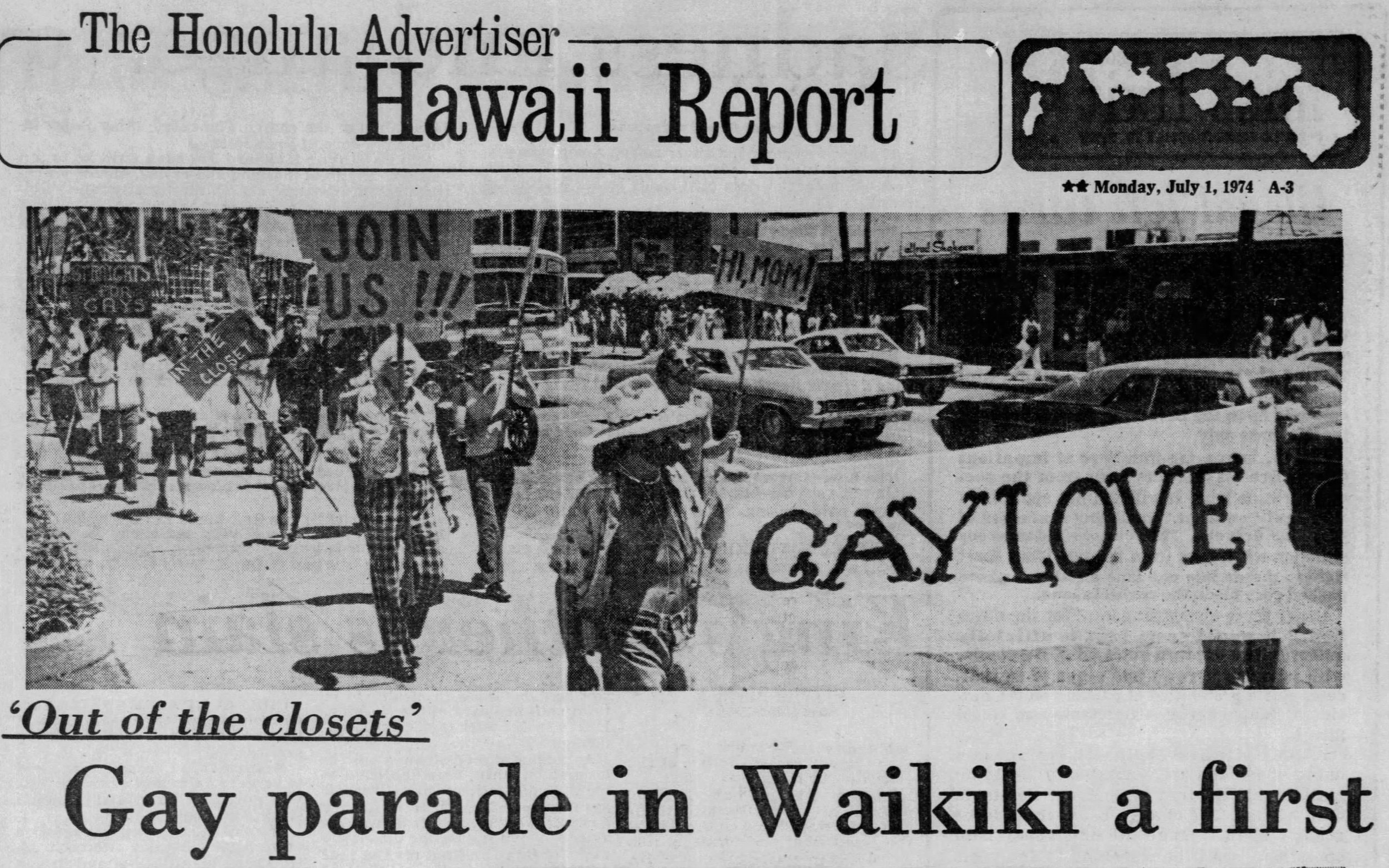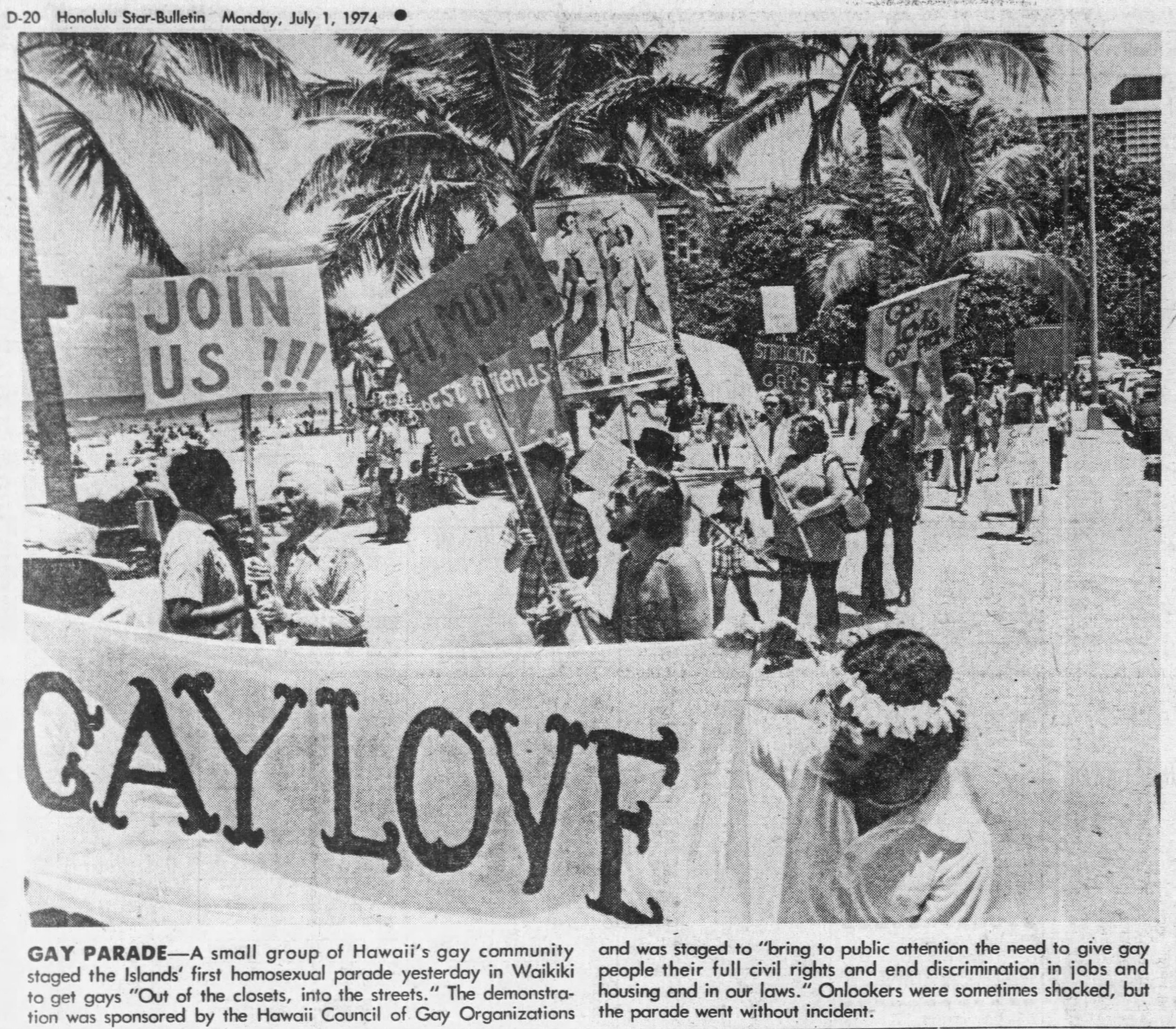
Gay Parade in Waikiki a First
1974
While Kānaka ʻŌiwi flourished in a complex society with diverse familial and intimate relationships for centuries, the arrival of foreigners on Hawaii's shores in the late 1700s brought beliefs and practices, both imposed and adopted, that shifted perspectives on gender and sexuality and created hostile conditions for māhū and anyone in the islands who dared live outside the rigid framework established by Christian prejudices.
Similar versions of this history have been playing out around the world for hundreds of years, but in the early 20th Century, gay people began to organize to oppose the violence of social stigma and shame and to promote dignity, respect, and equality for increasingly open and visible lesbian, gay, bisexual and transgender people.
This brief piece highlights the first public effort in Hawaii to participate in what has become the global Pride movement, an annual event that honors and celebrates the contributions made by the LGBTQ+ community to history, society and cultures worldwide.
As The Honolulu Advertiser reported, the first 'gay parade' took place in Waikiki on June 30, 1974 as a commemoration of the 1969 Stonewall Revolt in New York, “a landmark incident acknowledged as the beginning of gay liberation and LGBTQ+ pride in the United States.”
The Waikiki parade was sponsored by the Hawaii Council of Gay Organizations, made up of Oahu's Bi/Gay Women's Group, Gay Liberation Hawaii, Love & Peace Together, and the Metropolitan Community Church.
The parade's leaders, “all wearing flowery, violet armbands, held Hawaiian and American flags high on staffs, leading some 25 persons through a sunny Sunday sidewalk crowd in Waikiki, which appeared mostly amused, sometimes a bit shocked, but very tolerant” in order to “bring to public attention the need to give gay people their full civil rights and end discrimination in jobs and housing and in our laws.”
“We're not just doing this for effect,” said Grand Marshall Rev. Jack Isbell, pastor of the local Metropolitan Community Church. “What we're trying to do is show our gay brothers and sisters that they don't have to be afraid to come out of their closets. We want them to know that Hawaii is a neat place to live – the penal code here is for us, not against us.”
The parade culminated in a pot luck supper at Queen's Surf Beach, a popular gathering spot for the local māhū and growing LGBT community.
Story by Joe Wilson, Image credits: David Yamada for The Honolulu Advertiser article by staff writer Leonard Lueras titled “Gay parade in Waikiki a first” - published 7/1/74.




